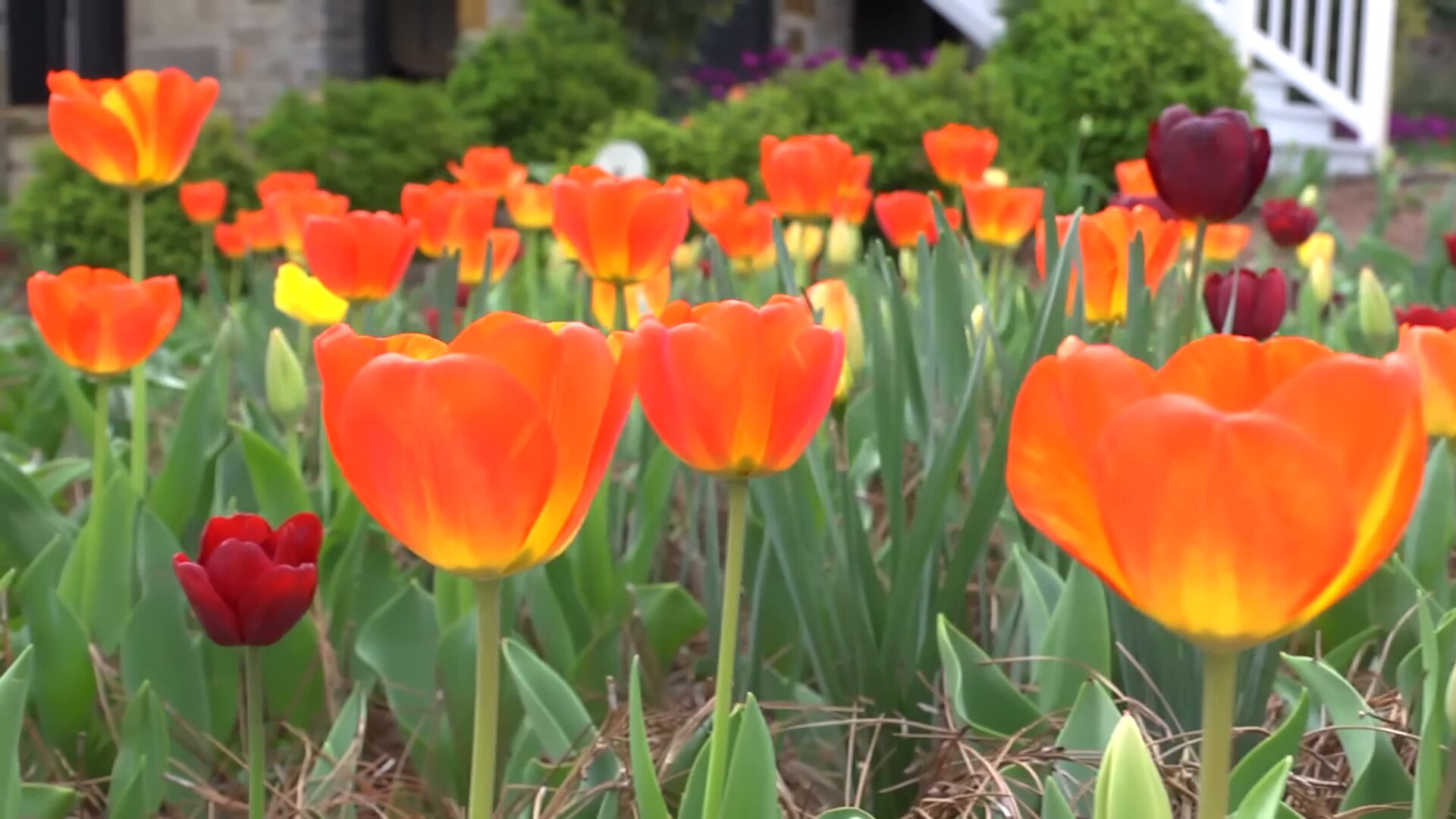Introduction to Tulips: Planting
for a Vibrant Spring Garden
Tulips are one of the loveliest and favorite spring flowers in the world. Its vibrant colors and
unique shapes are liked by everyone. This guide will give you complete tips and methods to grow
tulips, whether you are a beginner or an experienced gardener. Different varieties of tulips,
their care guide, and the health and environmental benefits of growing tulips will also be
mentioned.
Types of Tulips: Popular
Varieties to Beautify Your Garden
There is a lot of diversity in the varieties of tulips, and each variety has its own unique
color, shape, and bloom time. There are some popular varieties that will help in giving
different color and beauty to your garden:
- Single Early Tulips: Their blooms occur in early spring, featuring single,
cup-shaped flowers in intense colors.
- Double Late Tulips: These tulips bloom in late spring and their petals are
double layered, which gives them a full and lush look.
- Parrot Tulips: Parrot tulips' unique shape and colorful streaked petals
make them different and attractive, and they create a focal point in your garden.
- Darwin Hybrid Tulips: These are strong and tall tulips that can grow even
in windy areas. These bloom mostly in mid-spring and give long-lasting flowers.
Essential Tulip Care Guide for
Healthy, Blooming Plants
Caring for tulips is relatively easy, just a few things need to be taken care of:
- Sunlight: Tulips require full sun; At least 6-8 hours of direct sunlight is
best for their blooming and healthy growth.
- Watering: It is important to avoid overwatering as tulip bulbs can rot
easily. Keep the soil slightly moist and only water when the soil becomes dry.
- Soil: Tulips grow best in well-drained, sandy soil. Mixing compost or
organic matter in the soil improves nutrients and aeration, which creates a healthy
environment for the bulbs.
- Fertilization: Use balanced fertilizer; Add more fertilizer at planting
time and in early spring when the plants are actively growing.
- Pruning: When flowers are spent, remove them so that the plant conserves
energy and avoids disease. The leaves are left on the plant until they turn yellow, so
nutrients are returned to the bulb.
 Introduction aux tulipes
Introduction aux tulipes
Step-by-Step Guide to Planting
Tulips in Gardens and Pots
You can grow tulips directly in the garden or in pots. Here is an easy step-by-step guide that
will be helpful even for beginners:
- Choose a Location: A place where there is full sunlight and good drainage.
You can also grow tulips in containers, just ensure that the container has drainage holes.
- Prepare the Soil: Loosen the soil thoroughly and add organic matter or
compost. This will help in providing nutrients and aeration to the soil.
- Planting: Dig holes for the bulbs 6–8 inches deep and space them 4–6 inches
apart. This careful depth and spacing encourage strong root development.
- Mulching: Applying a layer of mulch helps retain soil moisture and regulate
temperature. Mulch also protects the bulbs from winter cold.
- Watering: Water immediately after planting and thereafter only when the
soil feels dry. Avoid overwatering.
- Supporting Growth: Keep removing weeds during the growing period and renew
the mulch layer as needed so that the roots and bulbs receive protection and moisture.
Common Tulip Diseases and How to
Prevent Them
For healthy tulips it is important to protect them from diseases. Here are some common tulip
diseases and their prevention and treatment tips:
- Botrytis Blight (Gray Mold): This is a fungal disease that occurs mostly in
moist conditions. Remove infected plants and maintain good air circulation.
- Bulb Rot: Occurs due to overwatering or poorly drained soil. Use
well-drained soil and store the bulbs in a dry and disease-free place.
- Aphids: These insects feed on tulip plants and spread diseases. Spray Neem
oil or remove aphids by hand.

The Benefits of Growing Tulips:
Health, Environment, and Beauty
Tulips are not just a beautiful addition but they also have many health and environmental
benefits:
- Natural Air Purifiers: Tulips absorb air pollutants, which maintains clean
air in your home and garden.
- Pollinator-Friendly: Tulips attract bees and butterflies, which keep your
garden's ecosystem in balance.
- Mental Health Benefits: Studies say that being surrounded by plants and
flowers reduces stress and anxiety and uplifts mood.
Conclusion: Embrace the Beauty
and Elegance of Tulips in Your Garden
Cultivating tulips is more than just planting a flower—it’s creating a vibrant tapestry that
celebrates the beauty of spring and nature’s resilience. With diverse varieties, breathtaking
colors, and relatively simple care, tulips are a rewarding choice for gardeners of all levels.
By nurturing these bulbs with the right sunlight, soil, and care, you’re not only adding
elegance to your garden but also supporting pollinators and enjoying a personal,
stress-relieving oasis. Let tulips bring life, color, and joy to your space, and experience the
transformative beauty they offer year after year. Embrace tulips, and let their magic fill your
garden each spring!



